
Lumion 3D Cookbook
¥79.56
This book offers uses practical applications using recipes with step-by-step instructions and useful information to help you master how to produce professional architectural visualizations in Lumion. The cookbook approach means you need to think and explore how a particular feature can be applied in your project and perform the intended task. This book is written to be accessible to all Lumion users and is a useful guide to follow when becoming familiar with this cutting-edge real-time technology.This practical guide is designed for all levels of Lumion users who know how to model buildings in 3D and a basic understanding of Lumion, who want to enhance their skills to the next level.
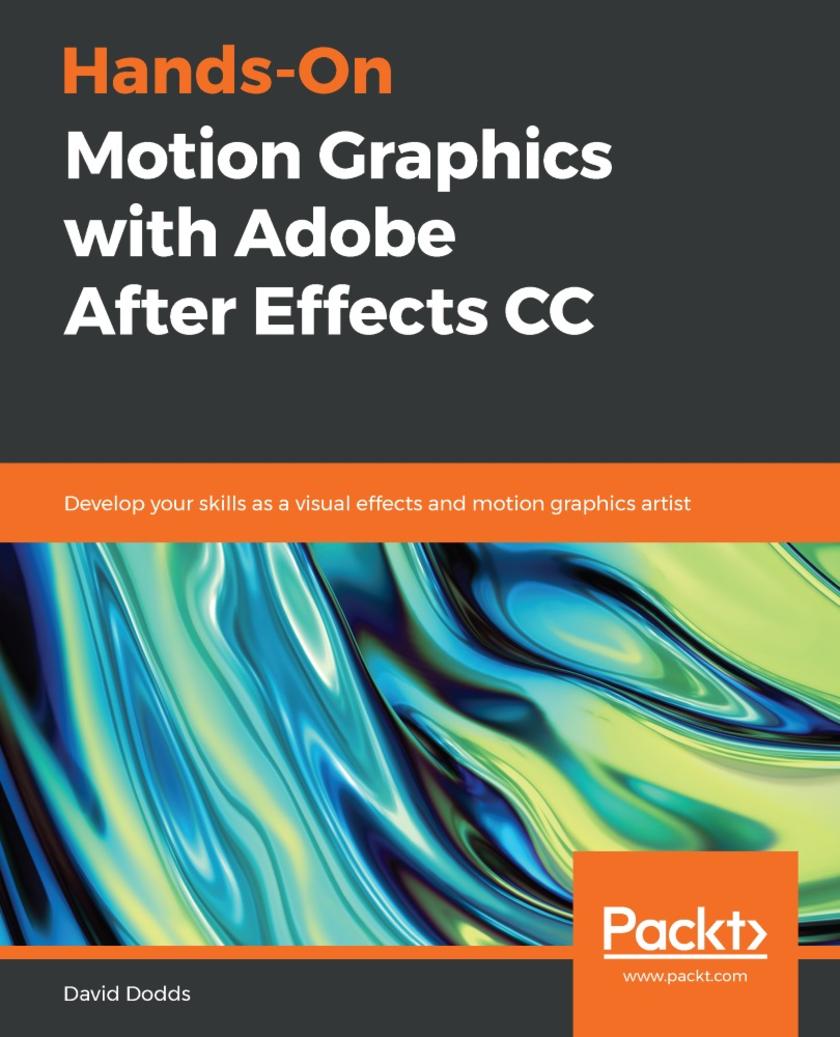
Hands-On Motion Graphics with Adobe After Effects CC
¥79.56
Discover techniques to enhance your videos with complex animation Key Features * Design, animate, and sequence a complete motion graphics project * Work with compositions and pre-compositions to create animations speedily * Maximize your motion graphics and visual effects skills Book Description If you’re thinking seriously about making and publishing your videos with professional editing and animation, look no further! Adobe After Effects is a popular tool among video editors and YouTubers to enhance their videos and bring them to life by implementing visual effects and motion graphics. This book will take you right from the basics through to the advanced techniques in Adobe After Effects CC 2018. You will start by setting up your editing environment to learn and improve techniques to sharpen your video editing skills. Furthermore, you will work with basic and advanced special effects to create, modify, and optimize motion graphics in your videos. Lastly, you will not only learn how to create 2.5D animations, but also get to grips with using Cinema 4D Lite to build and animate complete 3D scenes. By the end of the book, you’ll have learned how to package a video efficiently with the help of the projects covered. What you will learn * Create a lower third project for a TV show with complex layers * Work with shape layer animation to create an animated lyrics video * Explore different tools to animate characters * Apply text animation to create a dynamic film-opening title * Use professional visual effects to create a VFX project * Model, light, and composite your 3D project in After Effects Who this book is for If you’re a student, professional, YouTuber, or anyone who is interested in video editing, animation, and motion graphics, this book is for you. You’ll also find this resource useful if you’re an Illustrator looking to put your creations in motion.
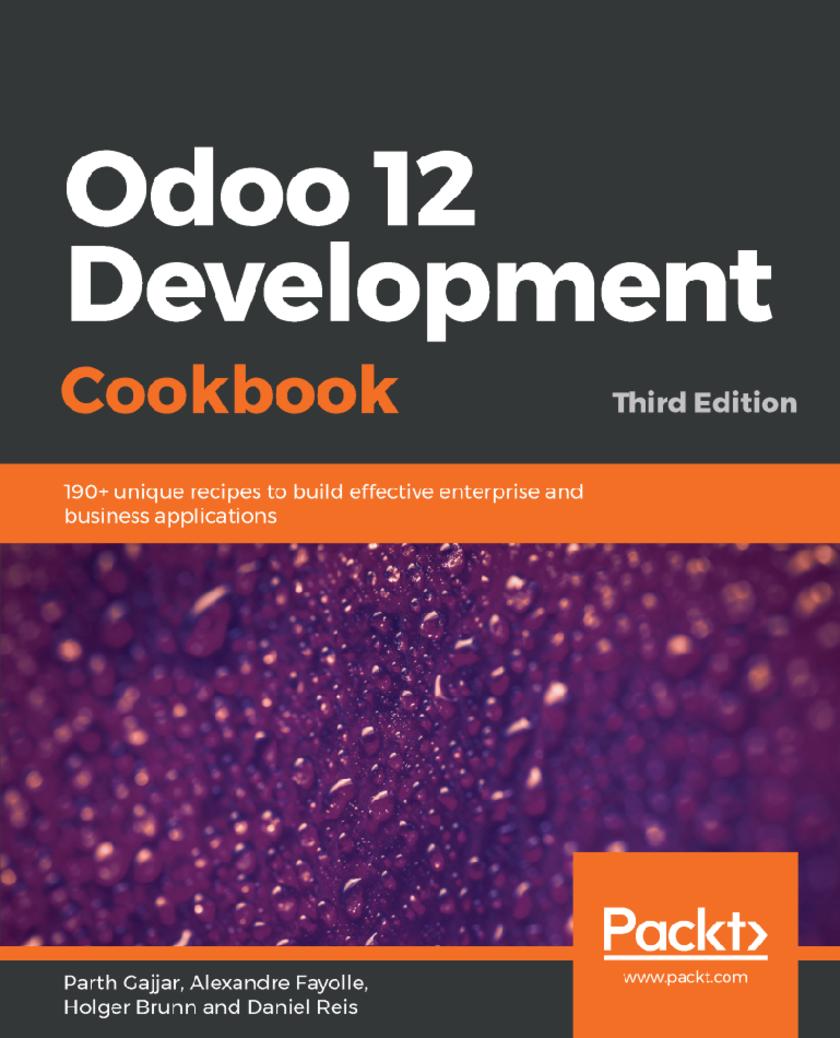
Odoo 12 Development Cookbook
¥79.56
Build customized solutions for your business using the latest features of Odoo 12 and Python Key Features * Get up to speed with Odoo 12 to create custom and reusable modules * Interconnect your application with other systems by implementing web APIs * Understand the mechanisms powering the Odoo framework and Odoo.sh to build robust enterprises Book Description Odoo is a powerful framework known for rapid application development. Its latest release, Odoo 12, introduces tons of new features. With this book, you’ll learn how to develop powerful Odoo applications from scratch, using all the latest features. This Odoo cookbook starts by covering Odoo installation and deployment on the server. Next, you’ll explore the Odoo framework with real-world examples. You’ll create a new Odoo module from the ground up and progress to advanced framework concepts. You’ll also learn how to modify existing applications, including Point of Sale (POS). This book is not just limited to backend development; the advanced JavaScript recipes for creating new views and widgets will help you build beautiful UI elements. As you move forward, you’ll gain insights into website development and become a quality Odoo developer by studying performance optimization, debugging, and automated tests. Finally, you’ll learn the latest concepts like multi-website, In-App Purchasing (IAP), Odoo.sh, and IoT Box. By the end of the book, you’ll have all the knowledge you need to build powerful Odoo applications. The development best practices used in this book will undoubtedly come handy when you are working with the Odoo framework. What you will learn * Develop a module in the Odoo framework and modify the existing flow of any application * Build dynamic websites with Odoo CMS * Create and modify backend JavaScript components in Odoo and POS * Connect and access any object in Odoo via Remote Procedure Calls (RPC) * Illustrate the different tools available in Odoo to implement business processes for your records * Implement in-app purchase services * Manage, deploy, and test an Odoo instance with the PaaS Odoo.sh * Configure IoT Box to add and upgrade Point of Sale (POS) hardware Who this book is for If you're a Python developer who wants to develop highly efficient business applications with the latest Odoo framework, or if you just want a solution guide for all your Odoo development issues, this book is for you. Some JavaScript programming and web development experience is necessary to get the most out of this book.
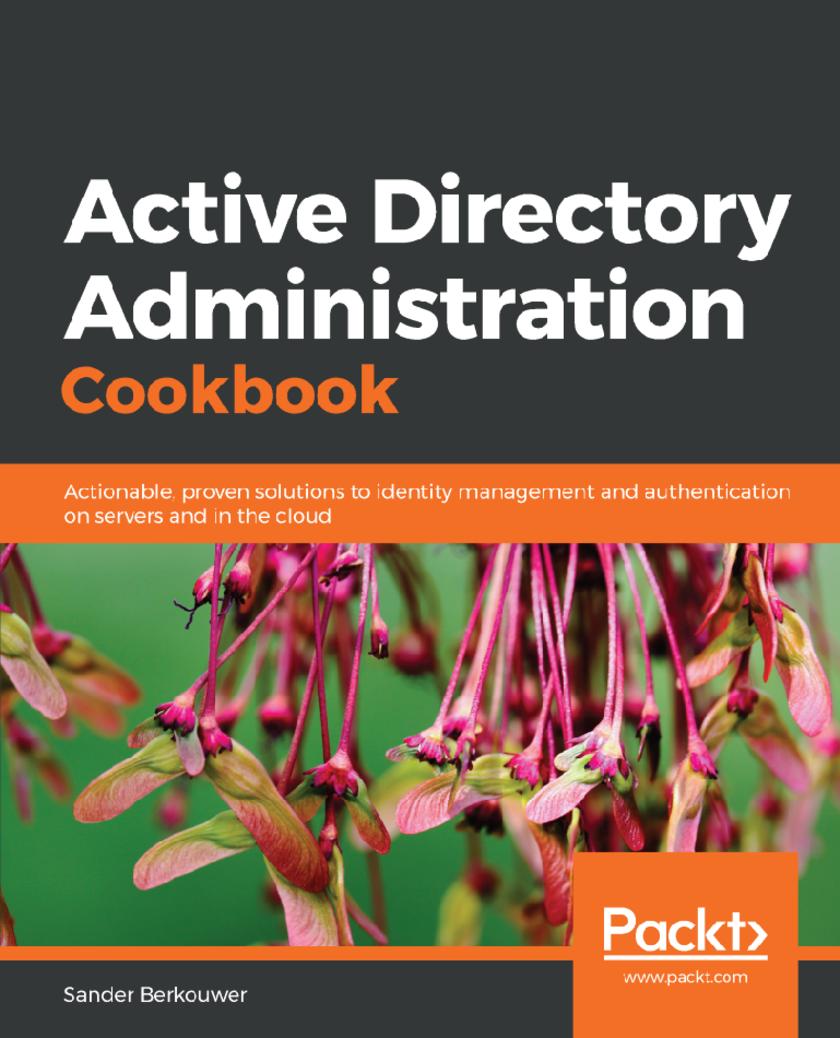
Active Directory Administration Cookbook
¥79.56
Learn the intricacies of managing Azure AD, Azure AD Connect as well as Active Directory for administration on cloud and Windows Server 2019 Key Features * Expert solutions for the federation, certificates, security, and monitoring with Active Directory * Explore Azure AD and AD Connect for effective administration on cloud * Automate security tasks using Active Directory and PowerShell Book Description Active Directory is an administration system for Windows administrators to automate network, security and access management tasks in the Windows infrastructure. This book starts off with a detailed focus on forests, domains, trusts, schemas and partitions. Next, you learn how to manage domain controllers, organizational units and the default containers. Going forward, you deep dive into managing Active Directory sites as well as identifying and solving replication problems. The next set of chapters covers the different components of Active Directory and discusses the management of users, groups and computers. You also go through recipes that help you manage your Active Directory domains, manage user and groups objects and computer accounts, expiring group memberships and group Managed Service Accounts with PowerShell. You learn how to work with Group Policy and how to get the most out of it. The last set of chapters covers federation, security and monitoring. You will also learn about Azure Active Directory and how to integrate on-premises Active Directory with Azure AD. You learn how Azure AD Connect synchronization works, which will help you manage Azure AD. By the end of the book, you have learned in detail about Active Directory and Azure AD, too. What you will learn * Manage new Active Directory features, such as the Recycle Bin, group Managed Service Accounts, and fine-grained password policies * Work with Active Directory from the command line and use Windows PowerShell to automate tasks * Create and remove forests, domains, and trusts * Create groups, modify group scope and type, and manage memberships * Delegate control, view and modify permissions * Optimize Active Directory and Azure AD in terms of security Who this book is for This book will cater to administrators of existing Active Directory Domain Services environments and/or Azure AD tenants, looking for guidance to optimize their day-to-day effectiveness. Basic networking and Windows Server Operating System knowledge would come in handy.
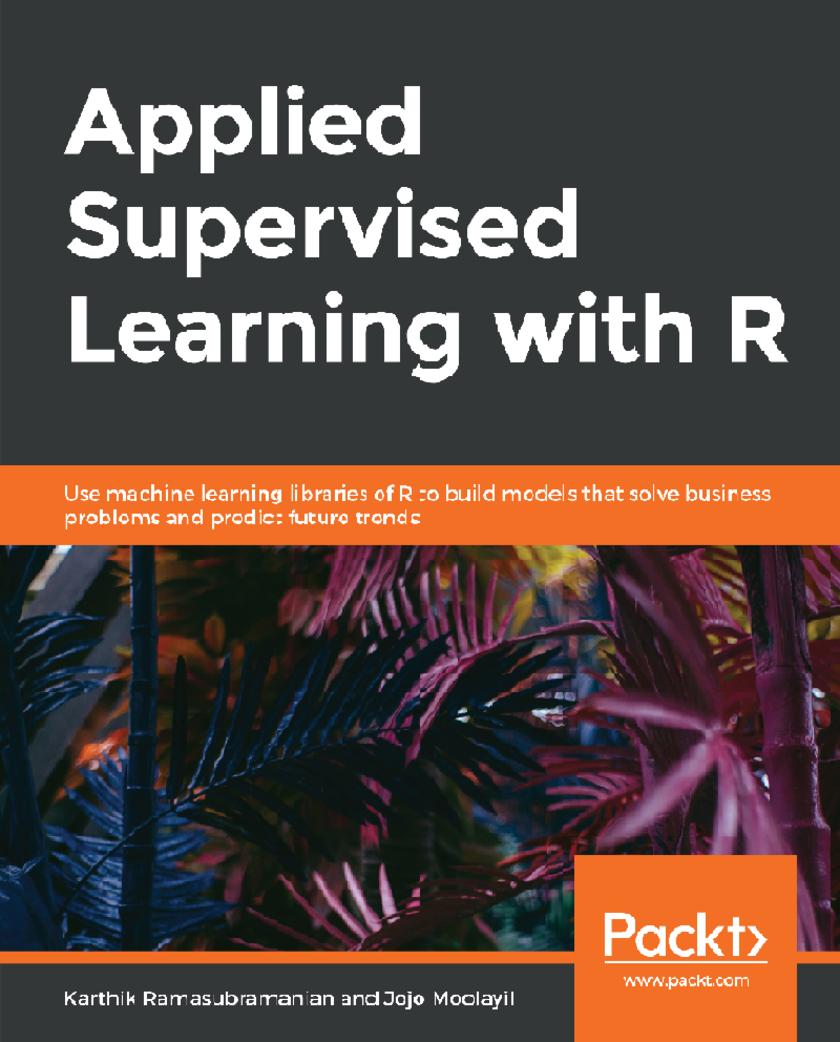
Applied Supervised Learning with R
¥79.56
Explore supervised machine learning with R by studying popular real-world uses cases such as object detection in driverless cars, customer churn, and default prediction Key Features * Study supervised learning algorithms by using real-world datasets * Fine tune optimal parameters with hyperparameter optimization * Select the best algorithm using the model evaluation framework Book Description R provides excellent visualization features that are essential for exploring data before using it in automated learning. Applied Supervised Learning with R helps you cover the complete process of employing R to develop applications using supervised machine learning algorithms for your business needs. The book starts by helping you develop your analytical thinking to create a problem statement using business inputs and domain research. You will then learn different evaluation metrics that compare various algorithms, and later progress to using these metrics to select the best algorithm for your problem. After finalizing the algorithm you want to use, you will study the hyperparameter optimization technique to fine-tune your set of optimal parameters. To prevent you from overfitting your model, a dedicated section will even demonstrate how you can add various regularization terms. By the end of this book, you will have the advanced skills you need for modeling a supervised machine learning algorithm that precisely fulfills your business needs. What you will learn * Develop analytical thinking to precisely identify a business problem * Wrangle data with dplyr, tidyr, and reshape2 * Visualize data with ggplot2 * Validate your supervised machine learning model using k-fold * Optimize hyperparameters with grid and random search, and Bayesian optimization * Deploy your model on Amazon Web Services (AWS) Lambda with plumber * Improve your model’s performance with feature selection and dimensionality reduction Who this book is for This book is specially designed for novice and intermediate-level data analysts, data scientists, and data engineers who want to explore different methods of supervised machine learning and its various use cases. Some background in statistics, probability, calculus, linear algebra, and programming will help you thoroughly understand and follow the content of this book.
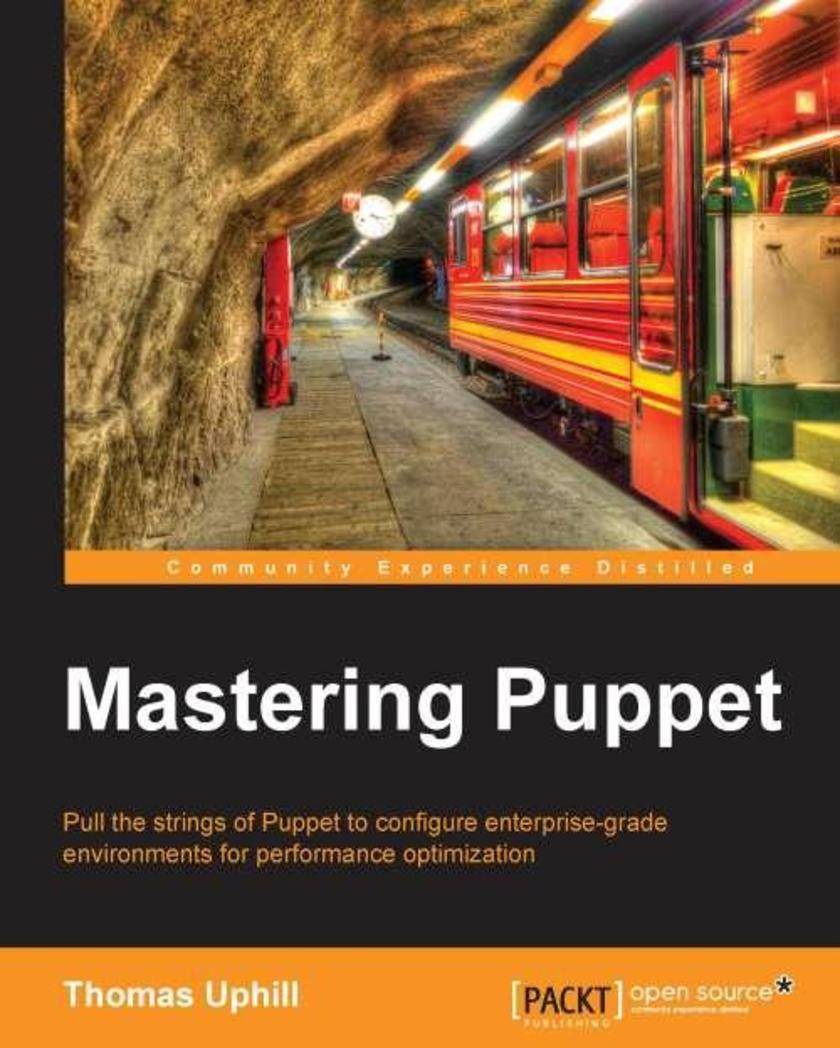
Mastering Puppet
¥79.56
Presented in an easy-to-follow, step-by-step tutorial format and packed with examples, this book will lead you through making the best out of Puppet in an enterprise environment. If you are a system administrator or developer who has used Puppet in production and are looking for ways to easily use Puppet in an enterprise environment, this book is for you. This book assumes an intermediate knowledge of Puppet and is intended for those writing modules or deploying Puppet in an enterprise environment.
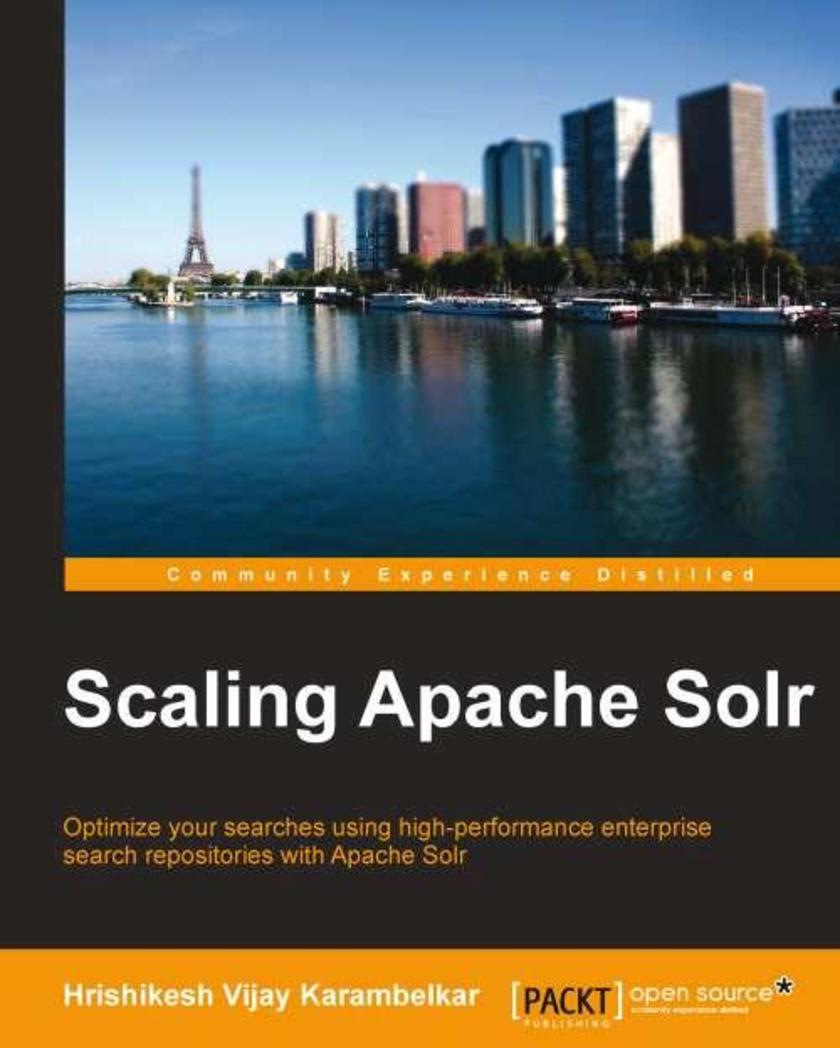
Scaling Apache Solr
¥79.56
This book is a step-by-step guide for readers who would like to learn how to build complete enterprise search solutions, with ample real-world examples and case studies. If you are a developer, designer, or architect who would like to build enterprise search solutions for your customers or organization, but have no prior knowledge of Apache Solr/Lucene technologies, this is the book for you.
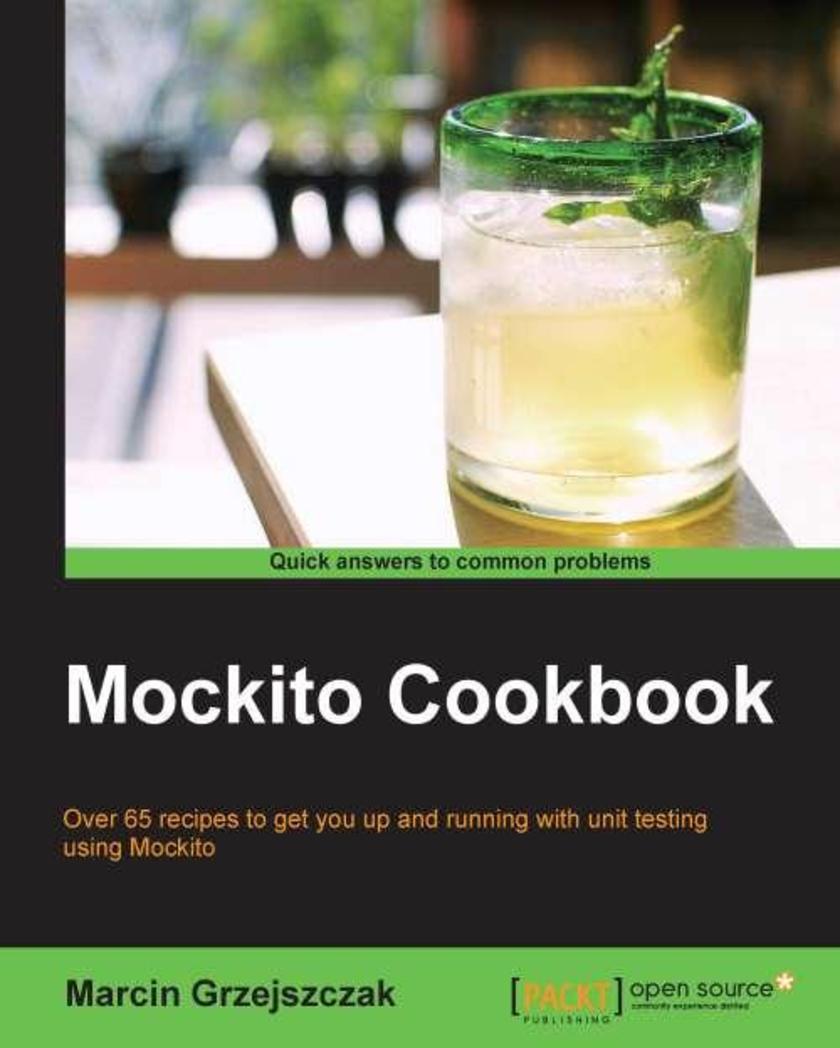
Mockito Cookbook
¥79.56
This is a focused guide with lots of practical recipes with presentations of business issues and presentation of the whole test of the system. This book shows the use of Mockito's popular unit testing frameworks such as JUnit, PowerMock, TestNG, and so on. If you are a software developer with no testing experience (especially with Mockito) and you want to start using Mockito in the most efficient way then this book is for you. This book assumes that you have a good knowledge level and understanding of Java-based unit testing frameworks.

Professional Azure SQL Database Administration
¥79.56
Leverage the features of Azure SQL database and become an expert in data management Key Features * Explore ways to create shards and elastic pools to scale Azure SQL databases * Automate common management tasks with PowerShell * Implement over 40 practical activities and exercises to reinforce your learning Book Description Despite being the cloud version of SQL Server, Azure SQL Database differs in key ways when it comes to management, maintenance, and administration. This book shows you how to administer Azure SQL database to fully benefit from its wide range of features and functionality. Professional Azure SQL Database Administration begins by covering the architecture and explaining the difference between Azure SQL Database and the on-premise SQL Server to help you get comfortable with Azure SQL database. You’ll perform common tasks such as migrating, backing up, and restoring a SQL Server database to an Azure database. As you progress, you’ll study how you can save costs and manage and scale multiple SQL Databases using elastic pools. You’ll also implement a disaster recovery solution using standard and active geo-replication. Whether it is learning different techniques to monitor and tune an Azure SQL database or improving performance using in-memory technology, this book will enable you to make the most out of Azure SQL database features and functionality for data management solutions. By the end of this book, you’ll be well versed with key aspects of an Azure SQL database instance, such as migration, backup restorations, performance optimization, high availability, and disaster recovery. What you will learn * Understand Azure SQL Database configuration and pricing options * Provision a new SQL database or migrate an existing on-premise SQL Server database to Azure SQL Database * Back up and restore Azure SQL Database * Secure an Azure SQL database * Scale an Azure SQL database * Monitor and tune an Azure SQL database * Implement high availability and disaster recovery with Azure SQL Database * Automate common management tasks with PowerShell * Develop a scalable cloud solution with Azure SQL Database * Manage, maintain, and secure managed instances Who this book is for If you’re a database administrator, database developer, or an application developer interested in developing new applications or migrating existing ones with Azure SQL database, this book is for you. Prior experience of working with an on-premise SQL Server or Azure SQL database along with a basic understanding of PowerShell scripts and C# code is necessary to grasp the concepts covered in this book.
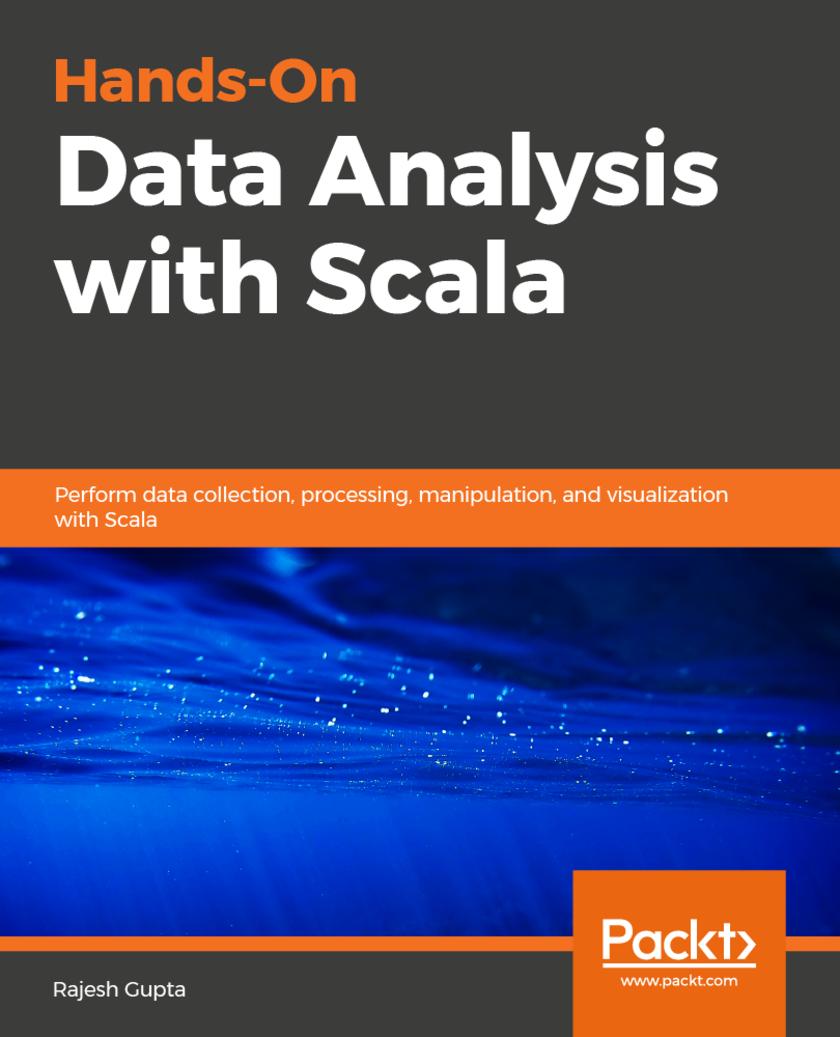
Hands-On Data Analysis with Scala
¥79.56
Master scala's advanced techniques to solve real-world problems in data analysis and gain valuable insights from your data Key Features * A beginner's guide for performing data analysis loaded with numerous rich, practical examples * Access to popular Scala libraries such as Breeze, Saddle for efficient data manipulation and exploratory analysis * Develop applications in Scala for real-time analysis and machine learning in Apache Spark Book Description Efficient business decisions with an accurate sense of business data helps in delivering better performance across products and services. This book helps you to leverage the popular Scala libraries and tools for performing core data analysis tasks with ease. The book begins with a quick overview of the building blocks of a standard data analysis process. You will learn to perform basic tasks like Extraction, Staging, Validation, Cleaning, and Shaping of datasets. You will later deep dive into the data exploration and visualization areas of the data analysis life cycle. You will make use of popular Scala libraries like Saddle, Breeze, Vegas, and PredictionIO for processing your datasets. You will learn statistical methods for deriving meaningful insights from data. You will also learn to create applications for Apache Spark 2.x on complex data analysis, in real-time. You will discover traditional machine learning techniques for doing data analysis. Furthermore, you will also be introduced to neural networks and deep learning from a data analysis standpoint. By the end of this book, you will be capable of handling large sets of structured and unstructured data, perform exploratory analysis, and building efficient Scala applications for discovering and delivering insights What you will learn * Techniques to determine the validity and confidence level of data * Apply quartiles and n-tiles to datasets to see how data is distributed into many buckets * Create data pipelines that combine multiple data lifecycle steps * Use built-in features to gain a deeper understanding of the data * Apply Lasso regression analysis method to your data * Compare Apache Spark API with traditional Apache Spark data analysis Who this book is for If you are a data scientist or a data analyst who wants to learn how to perform data analysis using Scala, this book is for you. All you need is knowledge of the basic fundamentals of Scala programming.
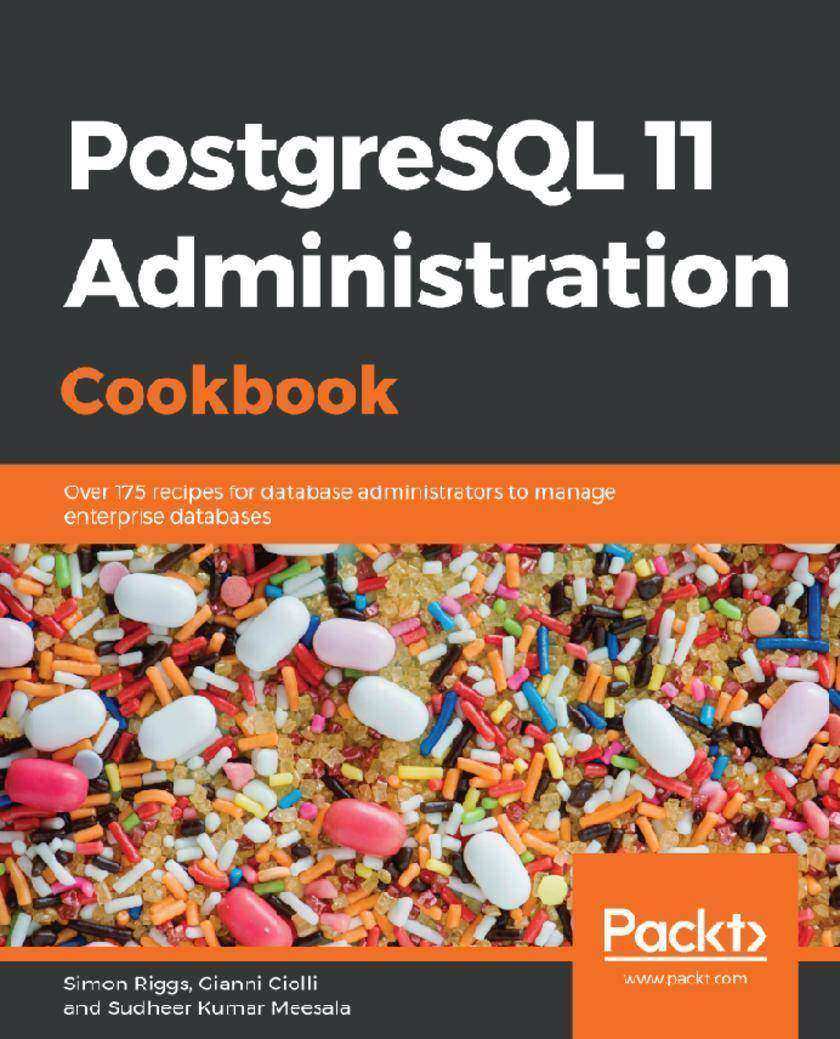
PostgreSQL 11 Administration Cookbook
¥79.56
A practical guide to administer, monitor and replicate your PostgreSQL 11 database Key Features * Study and apply the newly introduced features in PostgreSQL 11 * Tackle any problem in PostgreSQL 11 administration and management * Catch up on expert techniques for monitoring, fine-tuning, and securing your database Book Description PostgreSQL is a powerful, open source database management system with an enviable reputation for high performance and stability. With many new features in its arsenal, PostgreSQL 11 allows you to scale up your PostgreSQL infrastructure. This book takes a step-by-step, recipe-based approach to effective PostgreSQL administration. The book will introduce you to new features such as logical replication, native table partitioning, additional query parallelism, and much more to help you to understand and control, crash recovery and plan backups. You will learn how to tackle a variety of problems and pain points for any database administrator such as creating tables, managing views, improving performance, and securing your database. As you make steady progress, the book will draw attention to important topics such as monitoring roles, backup, and recovery of your PostgreSQL 11 database to help you understand roles and produce a summary of log files, ensuring high availability, concurrency, and replication. By the end of this book, you will have the necessary knowledge to manage your PostgreSQL 11 database efficiently. What you will learn * Troubleshoot open source PostgreSQL version 11 on various platforms * Deploy best practices for planning and designing live databases * Select and implement robust backup and recovery techniques in PostgreSQL 11 * Use pgAdmin or OmniDB to perform database administrator (DBA) tasks * Adopt efficient replication and high availability techniques in PostgreSQL * Improve the performance of your PostgreSQL solution Who this book is for This book is designed for database administrators, data architects, database developers, or anyone with an interest in planning and running live production databases using PostgreSQL 11. It is also ideal if you’re looking for hands-on solutions to any problem associated with PostgreSQL 11 administration. Some experience with handling PostgreSQL databases will be beneficial
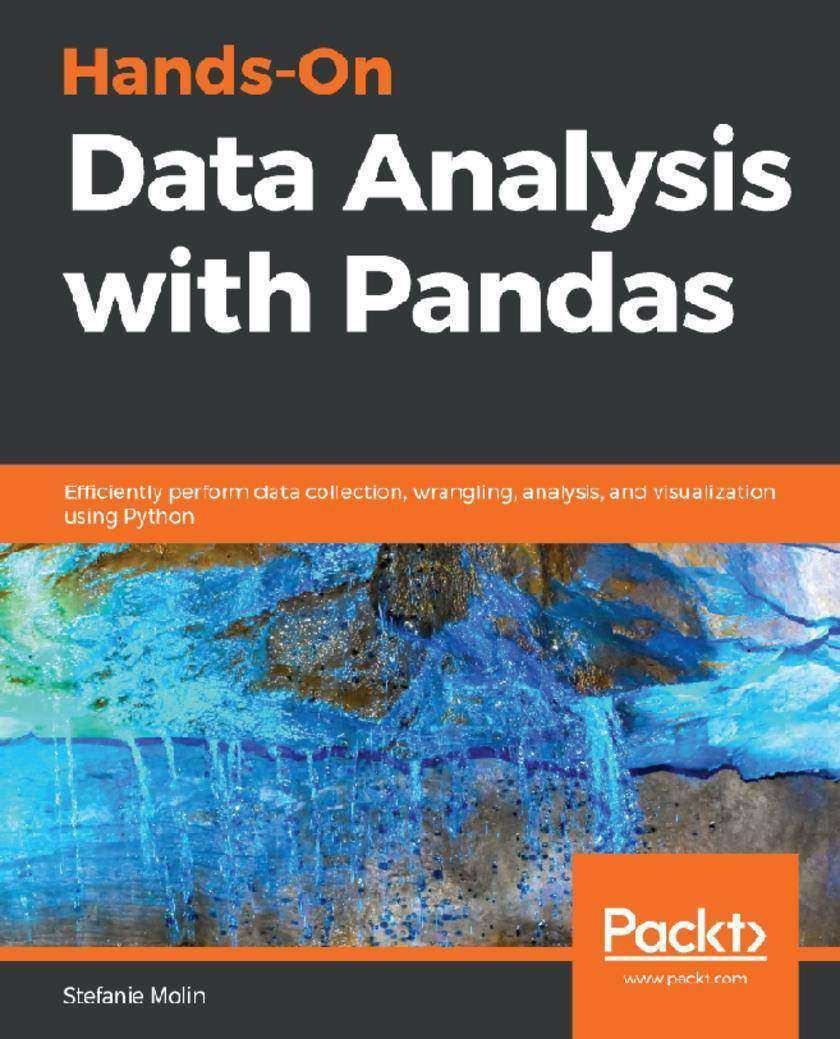
Hands-On Data Analysis with Pandas
¥79.56
Get to grips with pandas—a versatile and high-performance Python library for data manipulation, analysis, and discovery Key Features * Perform efficient data analysis and manipulation tasks using pandas * Apply pandas to different real-world domains using step-by-step demonstrations * Get accustomed to using pandas as an effective data exploration tool Book Description Data analysis has become a necessary skill in a variety of positions where knowing how to work with data and extract insights can generate significant value. Hands-On Data Analysis with Pandas will show you how to analyze your data, get started with machine learning, and work effectively with Python libraries often used for data science, such as pandas, NumPy, matplotlib, seaborn, and scikit-learn. Using real-world datasets, you will learn how to use the powerful pandas library to perform data wrangling to reshape, clean, and aggregate your data. Then, you will learn how to conduct exploratory data analysis by calculating summary statistics and visualizing the data to find patterns. In the concluding chapters, you will explore some applications of anomaly detection, regression, clustering, and classification, using scikit-learn, to make predictions based on past data. By the end of this book, you will be equipped with the skills you need to use pandas to ensure the veracity of your data, visualize it for effective decision-making, and reliably reproduce analyses across multiple datasets. What you will learn * Understand how data analysts and scientists gather and analyze data * Perform data analysis and data wrangling in Python * Combine, group, and aggregate data from multiple sources * Create data visualizations with pandas, matplotlib, and seaborn * Apply machine learning (ML) algorithms to identify patterns and make predictions * Use Python data science libraries to analyze real-world datasets * Use pandas to solve common data representation and analysis problems * Build Python scripts, modules, and packages for reusable analysis code Who this book is for This book is for data analysts, data science beginners, and Python developers who want to explore each stage of data analysis and scientific computing using a wide range of datasets. You will also find this book useful if you are a data scientist who is looking to implement pandas in machine learning. Working knowledge of Python programming language will be beneficial.
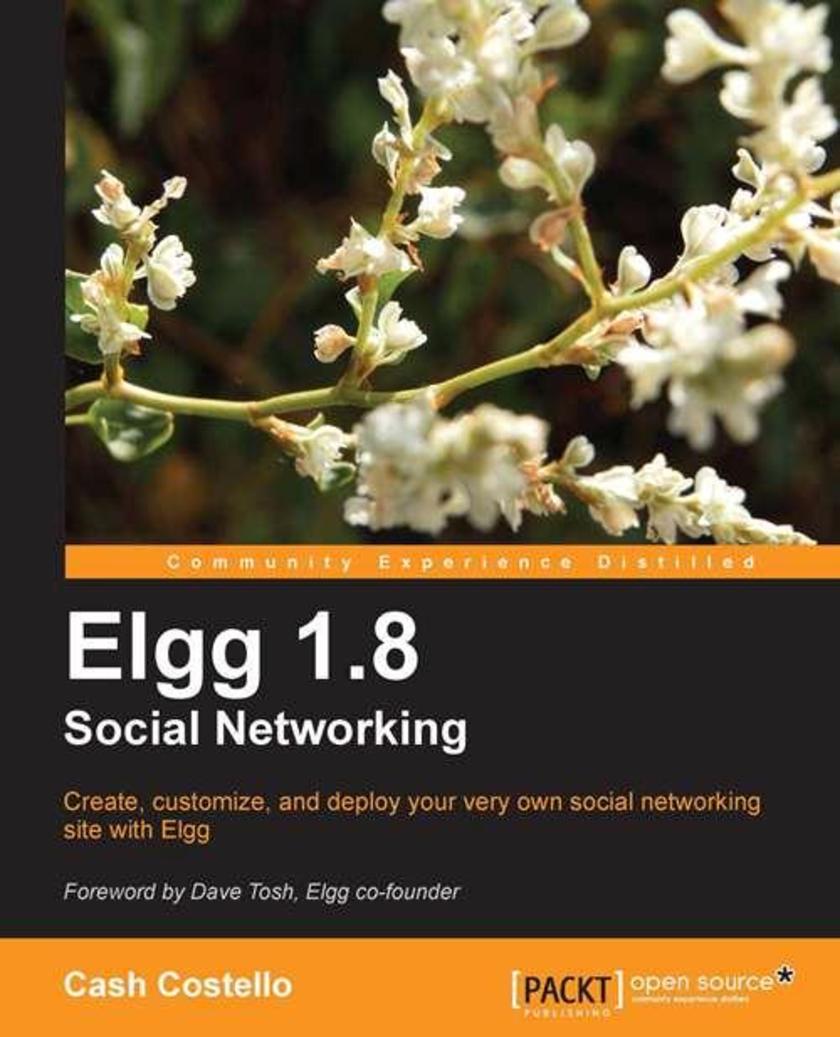
Elgg 1.8 Social Networking
¥80.65
This book provides more than just a step-by-step guide to installing and using Elgg. It includes practical advice gained through experience on what it takes to deploy and maintain an Elgg-based site. If you are a software developer or are familiar with PHP, it provides both a tutorial-based introduction and a quick reference guide so that you can quickly extend and customize Elgg. If you want to create a social networking site using Elgg and do not have a background in software development, this book provides all the information and advice that you need written just for you. If you are a developer, it also contains valuable tutorials and reference material so that you can begin writing code right away.
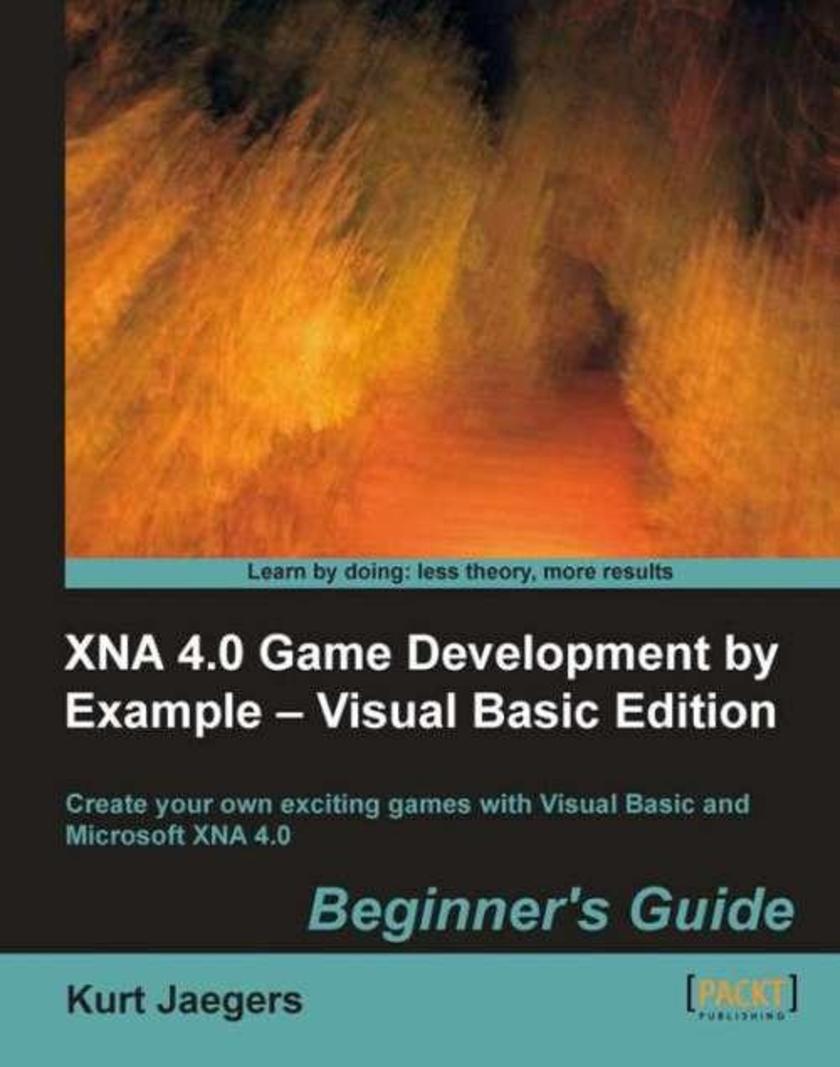
XNA 4.0 Game Development by Example: Beginner's Guide – Visual Basic Edition
¥80.65
This book is a step-by-step tutorial that includes complete source code for all of the games covered. It adopts an engaging style to teach all the game development concepts. Each block of code is explained, and game development concepts are diagrammed and covered in detail. Each game begins with a concept de*ion and concludes with suggestions for expanding on the finished game. If you are an aspiring game developer who wants to take a shot at creating games for the Microsoft Windows platform with the XNA Framework, then this book is for you. Using this book, you can get started with creating games without any game development experience. A basic knowledge of Visual Basic would be needed to kickstart your game development.
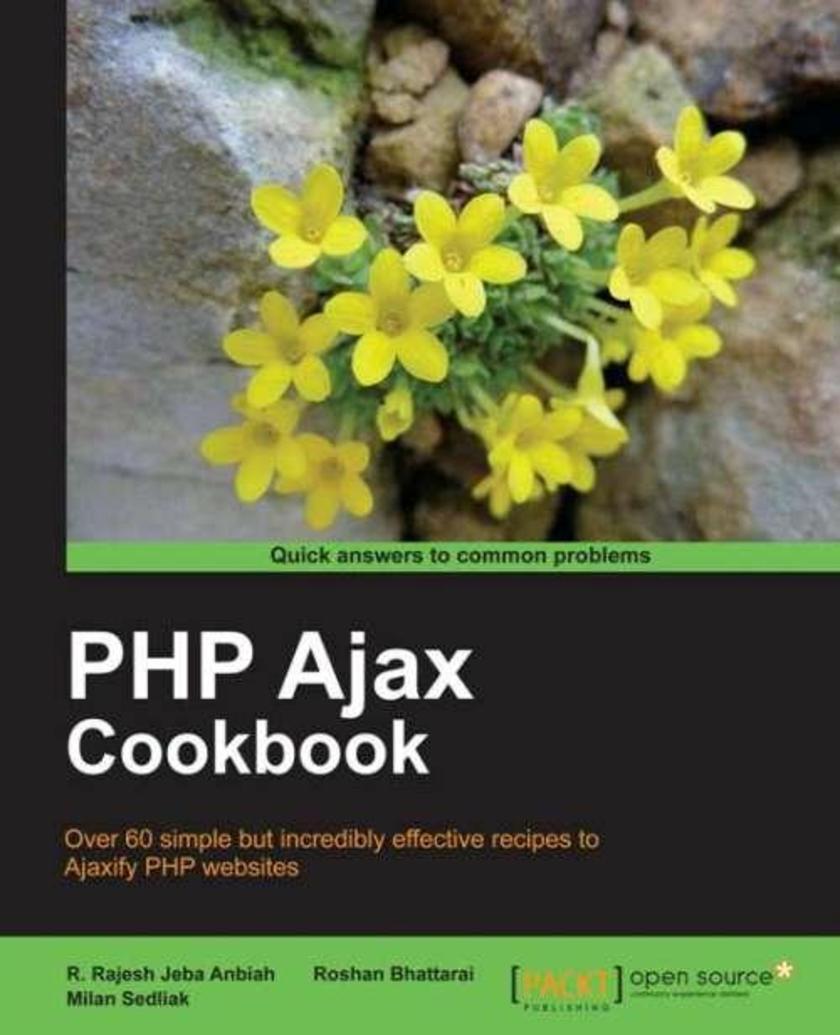
PHP Ajax Cookbook
¥80.65
This book contains a collection of recipes with step-by-step directions to build SEO-friendly websites using standard Ajax tools. Each recipe contains behind-the-scene explanations to PHP Ajax questions. This book is an ideal resource for people who like to add Ajax features to websites and who prefer standards and best practices for building SEO-friendly websites. As the book covers advanced topics, readers need to be aware of basic PHP, JavaScript and XML features.
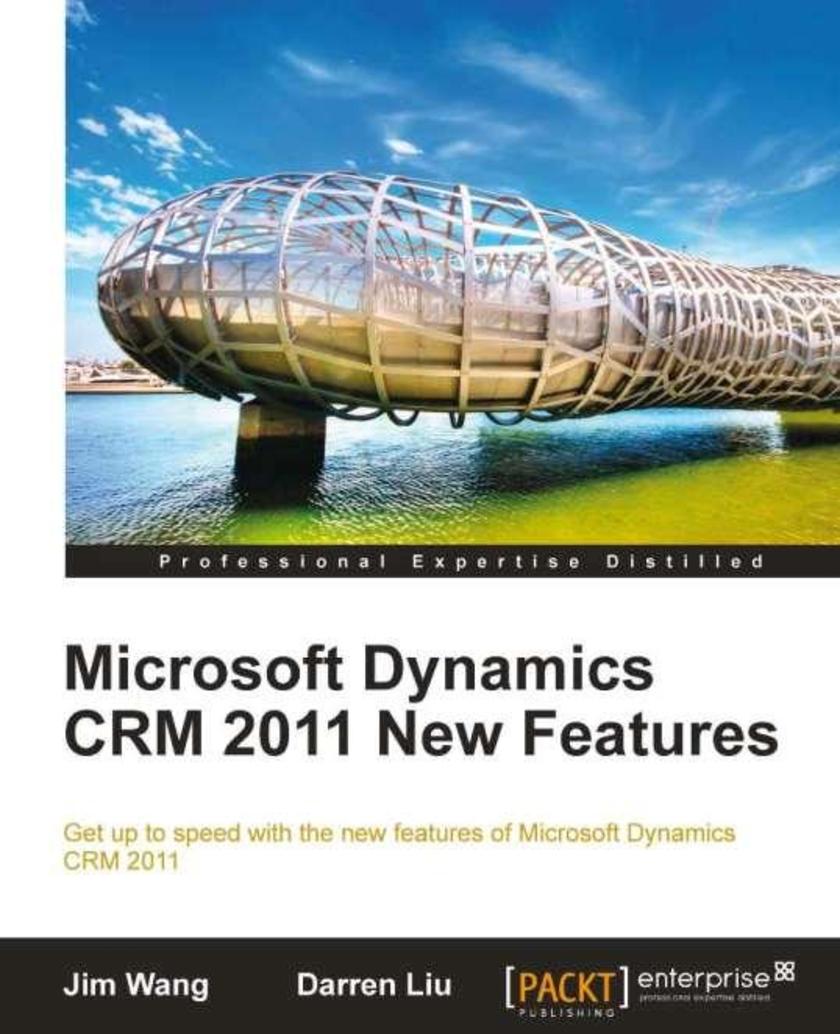
Microsoft Dynamics CRM 2011 New Features: The real-world tutorial
¥80.65
This book is packed with practical steps and screenshots to make learning fun and addictive. You will learn to build a complete Airline Compensation Management system using Dynamics CRM 2011. If you want a focused book that gets you up-to-speed with the new features of Microsft Dynamics CRM 2011 then this is the perfect book for you.

Drupal 7 Social Networking
¥80.65
This book is packed with clear instructions and careful explanations for creating a powerful social networking site using Drupal 7. With each chapter, you add new features and content until your social network is ready to be released to the Internet where it can grow. By the end of this book, you will have a powerful social network which you can either choose to model on the case-study, or create to your own unique design. This book is aimed at anyone looking to create their own social networking website, including: Businesses – building a social network around a product or service can improve your company profile and increase customer loyalty, while an internal social network gives you employees a place to keep resources, discuss ideas, raise concerns, and keep up to date on company policies. Hobbyists – create a community around your hobbies and interests; create a local or distributed user group. Organizations and charities – raise your profile, promote your events, services, and fundraisers, and get help from the community in organizing them. Families – for large families based across the country or across the globe, keep up to date with everyone, and let everyone know what you are up to. You don't need any experience of Drupal or PHP to use this book. If you are a Drupal user you will find this book a great way to rapidly tailor an existing installation into a socially orientated website.
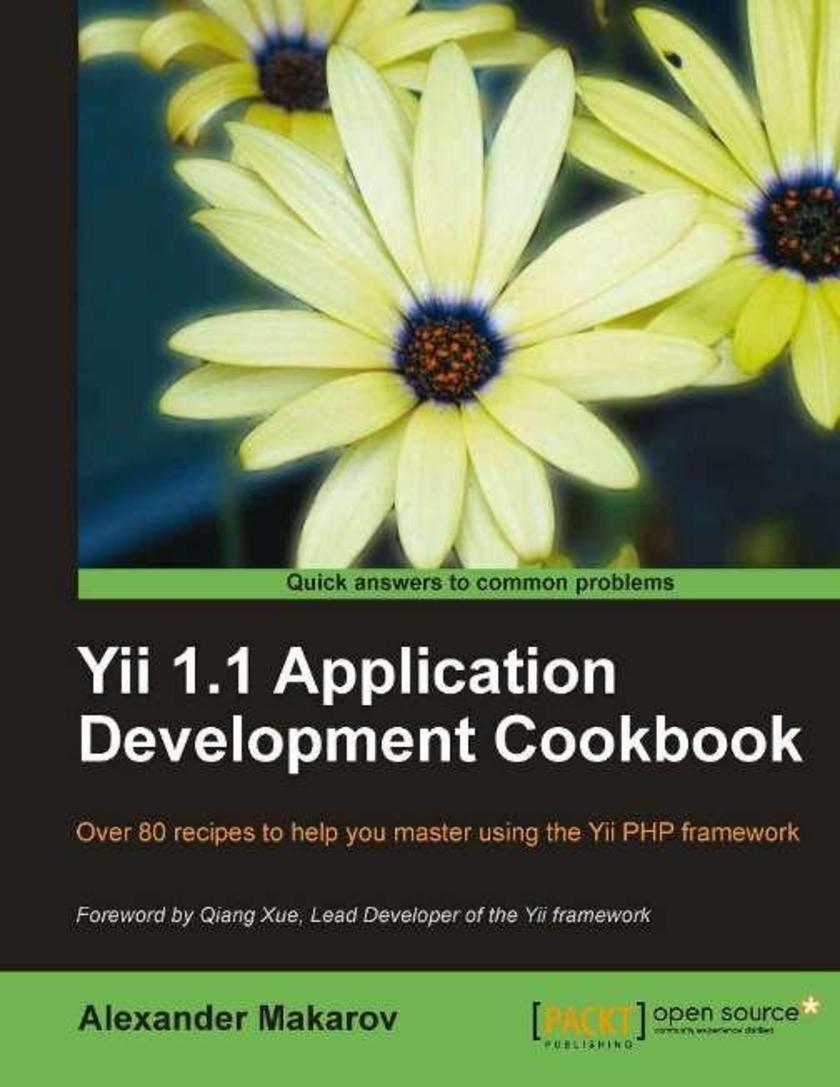
Yii 1.1 Application Development Cookbook
¥80.65
This book is a collection of Yii recipes with chapters generally independent of each other. It is full of practically useful solutions and concepts explained with code and the required pictorial illustrations. If you are a developer with a good knowledge of PHP5, are familiar with the basics of Yii, and have tried to develop applications using Yii, then this book is for you. Knowledge of the object oriented approach and MVC pattern will be a great advantage as Yii uses these extensively.
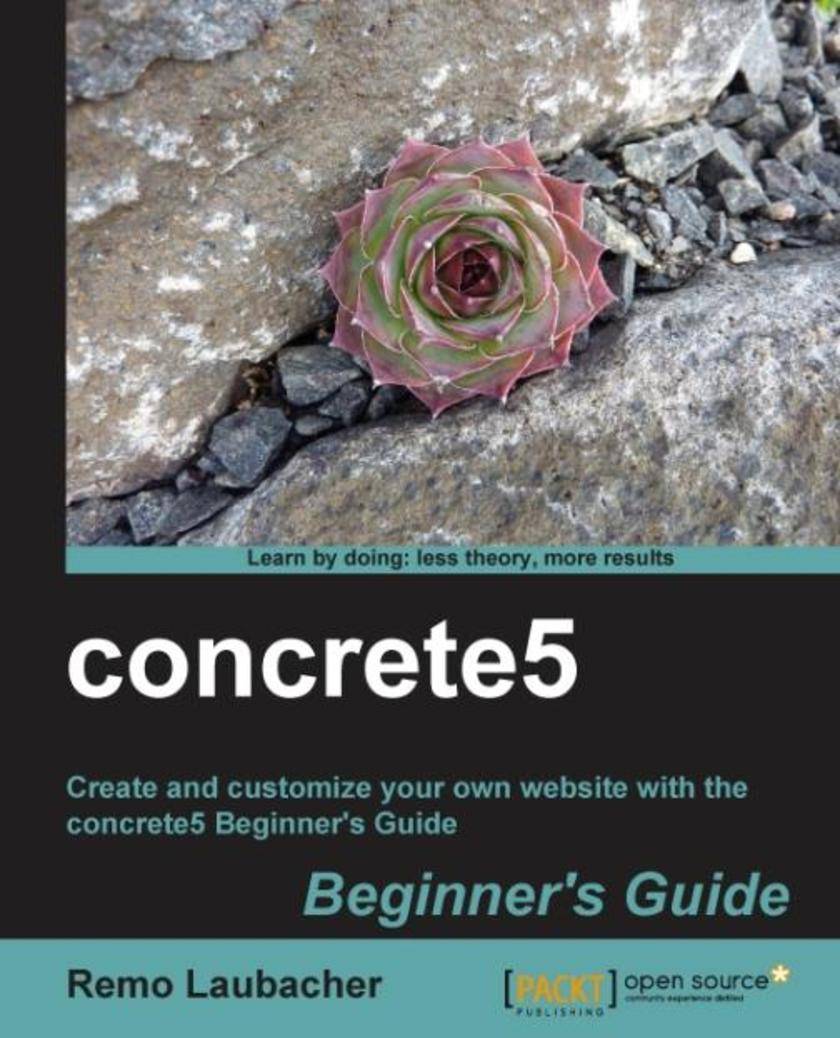
concrete5 Beginners Guide
¥80.65
Create and customize your own website with the Concrete5 Beginner's Guide
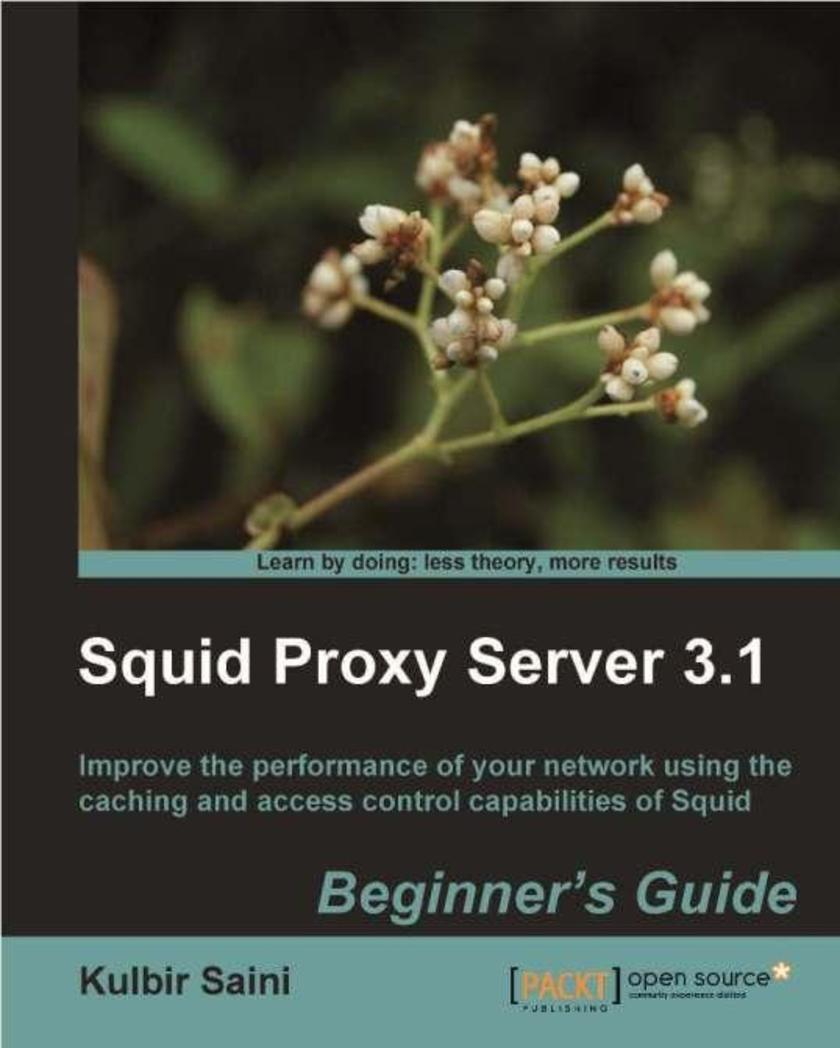
Squid Proxy Server 3.1: Beginner's Guide
¥80.65
Part of Packt's Beginner's Guide Series, this book has lots of screenshots and step-by-step instructions to help you get to grips with the techniques as quickly as possible. Each chapter is dedicated to a different aspect of the Squid proxy server, so you will have a thorough understanding of how everything works and how it is connected by the end of the book. If you are a Linux or Unix system administrator and you want to enhance the performance of your network or you are a web developer and want to enhance the performance of your website, this book is for you. You are expected to have some basic knowledge of networking concepts, but may not have used caching systems or proxy servers before now.
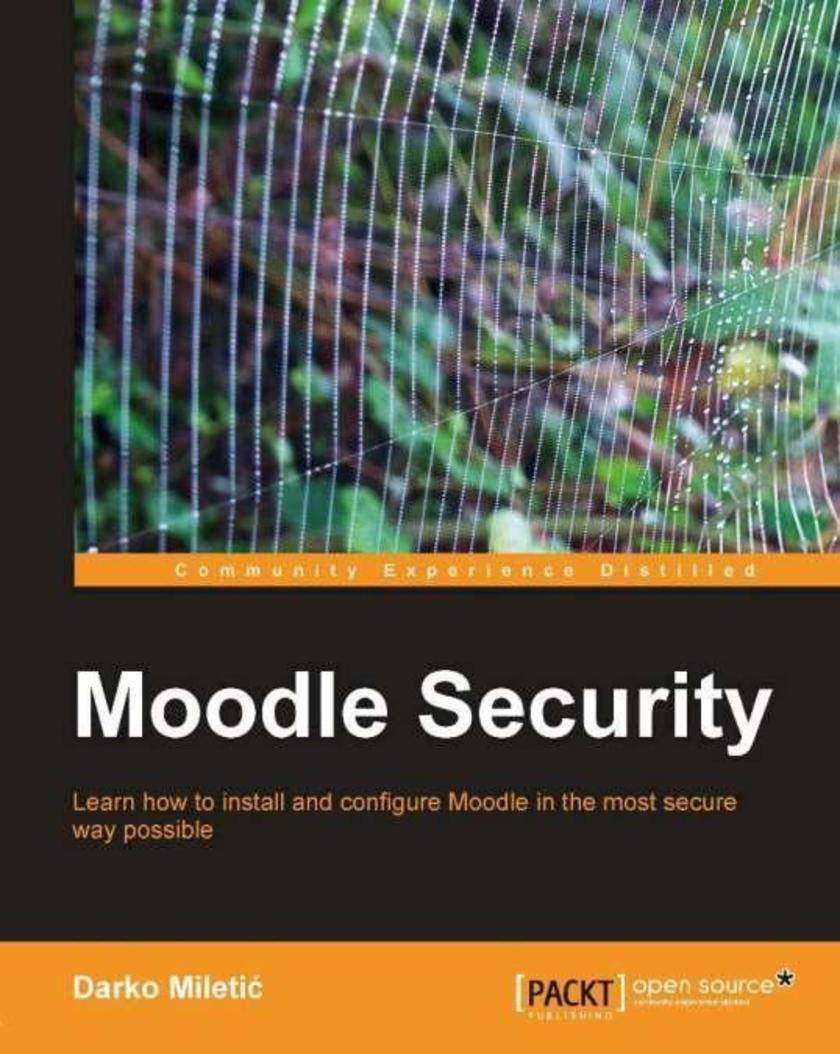
Moodle Security
¥80.65
Moodle Security is packed with practical examples, which guide you through optimizing the protection of your Moodle site. Each chapter covers a different security threat and how to secure your site against it. You will also find recommendations for what is best for your particular system and usage. If you are in charge of Moodle – whether you are an administrator or lead teacher – then securing it is one of the most important things that you can do. You need to know the basics of working with Moodle, but no previous experience of system administration is required.




 购物车
购物车 个人中心
个人中心



